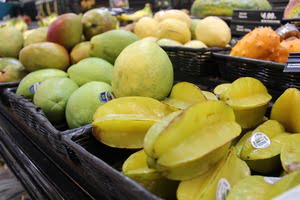When you’re struggling to keep up with a hectic college study load, healthy eating can fall to the wayside. Add a stunted grocery budget to the equation, and it can seem impossible. But maintaining smart college habits begins with acknowledging your priorities.
Regardless of your physique, healthy eating should remain your number one concern. Diet has a massive affect your body. And a poor diet can have a negative impact on your sleep cycle, your ability to fight off illnesses and your ability to perform well in classes.
Unfortunately, a lot of college students’ go-to foods happen to be the ones lowest in nutritional substance. Anyone who makes the effort to search for better dietary alternatives and address their money management shortcomings should be able to sustain a healthy diet without starving themselves or their bank account.
With the right planning, there is no reason you should be paying more than $50 on food and groceries per week. Here are a few tips on how to make that happen:
Set realistic health goals and stick to your spending limit
Approaching healthy eating on a modest budget requires a game plan– a strategy for getting the most value out of your money. Often time, that means making compromises. Instead of your favorite cereal, you may have to try the off-brand version.
Avoid going into the grocery store without a clear idea of what you’re looking for. Go in with a written summary of what kind of foods you’re looking for and set price limits. Decide beforehand how much protein or fiber you’re aiming for and limit how much fat, carbs or sodium you plan to intake per serving.
Consider downloading an app like Fooducate to help you see through the often misleading nutritional claims on your groceries.
You may also want to consider changing where you buy groceries entirely. As a general rule of thumb, avoid shopping for groceries on campus since produce usually have a high mark-up prices. Instead, find out where your closest farmer’s market is and try stocking up on fruits and vegetables that are in season.
Invest in food storage sets
Making enough food for more than one meal can save you time and money, if you freeze the leftovers for later. Pick up a pack of freezer-safe, microwave-save food containers; a set of containers range from 10 to 25 dollars.
Foods like bread, soups, fresh fruits and vegetables, baked pasta dishes, and most pastries are typically easier and cheaper to prepare in bulk and are safe for freezing. Having healthy foods ready to warm up can help dim the temptation of eating out.
Other kitchen essentials for health-conscious students living on their own for the first time:
- Vegetable steamer
- Rice cooker
- Salad spinner
- Blender
- Knife and cutting board
- A large pot and wooden spoon
Stock your dorm or apartment with healthy snacks
Many students don’t have a set time for their meals and typically eat whenever they find the time in between classes, studying and work. So instead of three large meals, you might partake in five smaller meals or snacks.
Avoid buying prepackaged fruits and vegetables that are already sliced, as they are often more expensive and spoil faster. Instead buy fresh, raw fruits and vegetables, cut them yourself and store them away in containers in the refrigerator or freezer.
Be careful when buying snack bars which are notorious for misleading health claims. Try to find snack bars mostly made of fruit, nuts or whole grains with no added sugar or artificial ingredients.
TIP: Even with a hectic schedule, try to make time for a small meal every three to four hours. This may mean snacking in between classes or at work, so be sure to stash food away in more accessible locations such as your car or back pack.
Aim for nutritional density, not bulk
Instant ramen noodles are a dietetic cliche in college, but they are high in fat and sodium and are almost completely void of any nutritional value. Sure, it’s cheap and you’ll get the immediate gratification that this microwavable “meal” has to offer. But it’ll do more harm than good to your health, and you’ll likely still be hungry when you’re finished.
College students have varying standards when they make a trip to the supermarket. Volume, price, appearance, brand and taste all play big roles in what foods students choose. But nutritional density (a food’s nutritional value in terms of its size) should remain your first concern.
Stay around the edges of the supermarket where the refrigerated and frozen goods are. Look for superfoods (foods with high nutritional density) which include: lean meat, fish, low fat or fat-free dairy products, raw fruits and vegetables, whole grain pastas and brown rice.
Eating healthy on a slim budget can seem impossible. But with the right priorities and thoughtful planning, you can maintain a healthy diet without going broke.




